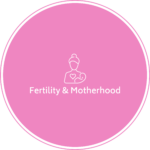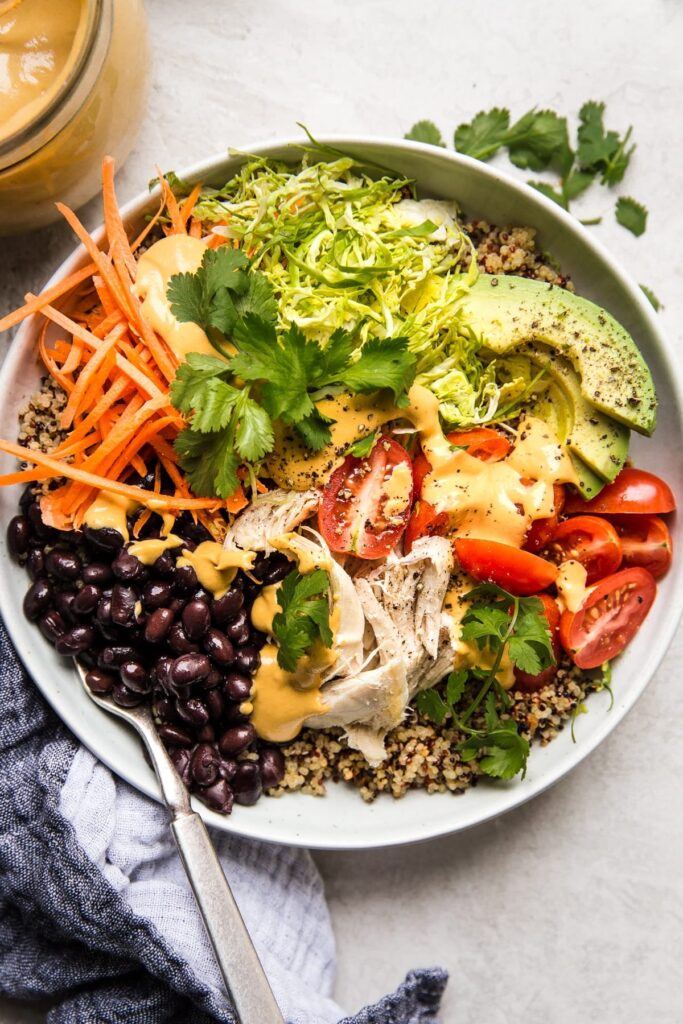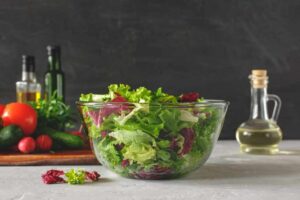The Fertility-Boosting Quinoa Bowl is a wholesome and delicious bowl filled with superfoods that provide essential nutrients for enhanced reproductive health. Packed with fertility-friendly ingredients, this bowl is a satisfying and nourishing addition to your fertility-enhancing diet. Let’s dive into the recipe and explore the benefits of each ingredient.
The Fertility-Boosting Quinoa Bowl Recipe
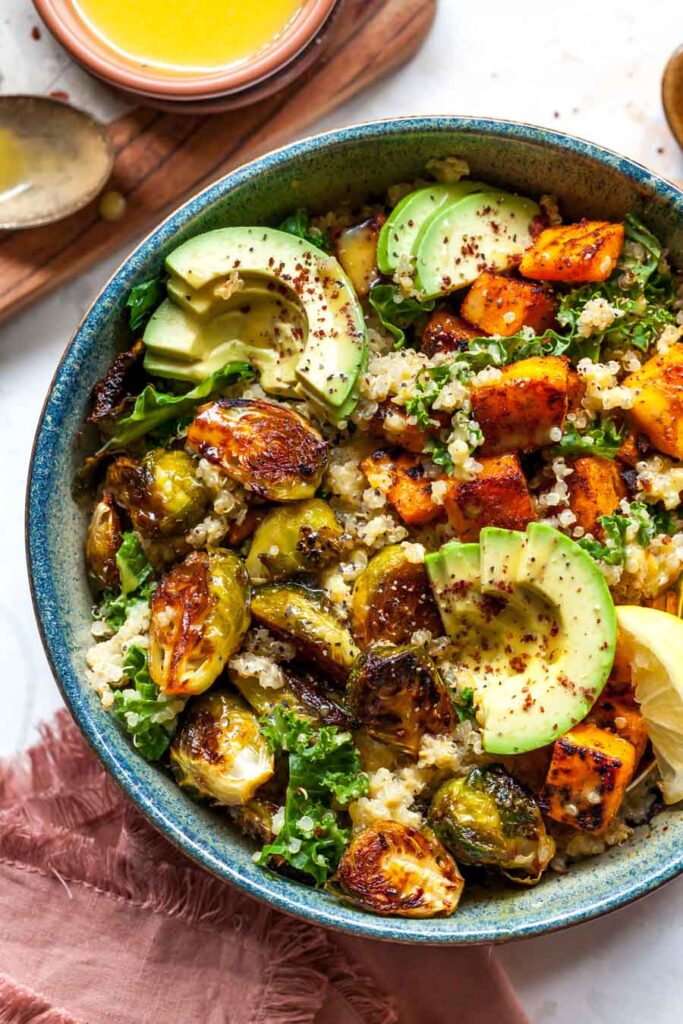
Ingredients:
– 1 cup cooked quinoa (provides protein, fiber, and essential minerals)
– 1/2 cup roasted sweet potatoes (rich in beta-carotene and vitamin C)
– 1/2 cup steamed broccoli florets (contains folate and other fertility-supporting nutrients)
– 1/4 cup chickpeas (a source of protein, fiber, and folate)
– 2 tablespoons pumpkin seeds (provides zinc and omega-3 fatty acids)
– 1/4 avocado (a good source of healthy fats and vitamin E)
– 1 tablespoon extra-virgin olive oil (rich in monounsaturated fats)
– Juice of 1/2 lemon (provides vitamin C and aids nutrient absorption)
– Salt and pepper to taste
Instructions:
- In a bowl, combine the cooked quinoa, roasted sweet potatoes, steamed broccoli florets, and chickpeas.
- Add the pumpkin seeds and diced avocado.
- Drizzle with extra-virgin olive oil and squeeze the lemon juice over the bowl.
- Season with salt and pepper to taste.
- Gently toss the ingredients until well mixed.
- Serve immediately and enjoy the fertility-boosting nourishment.
Understanding the Benefits
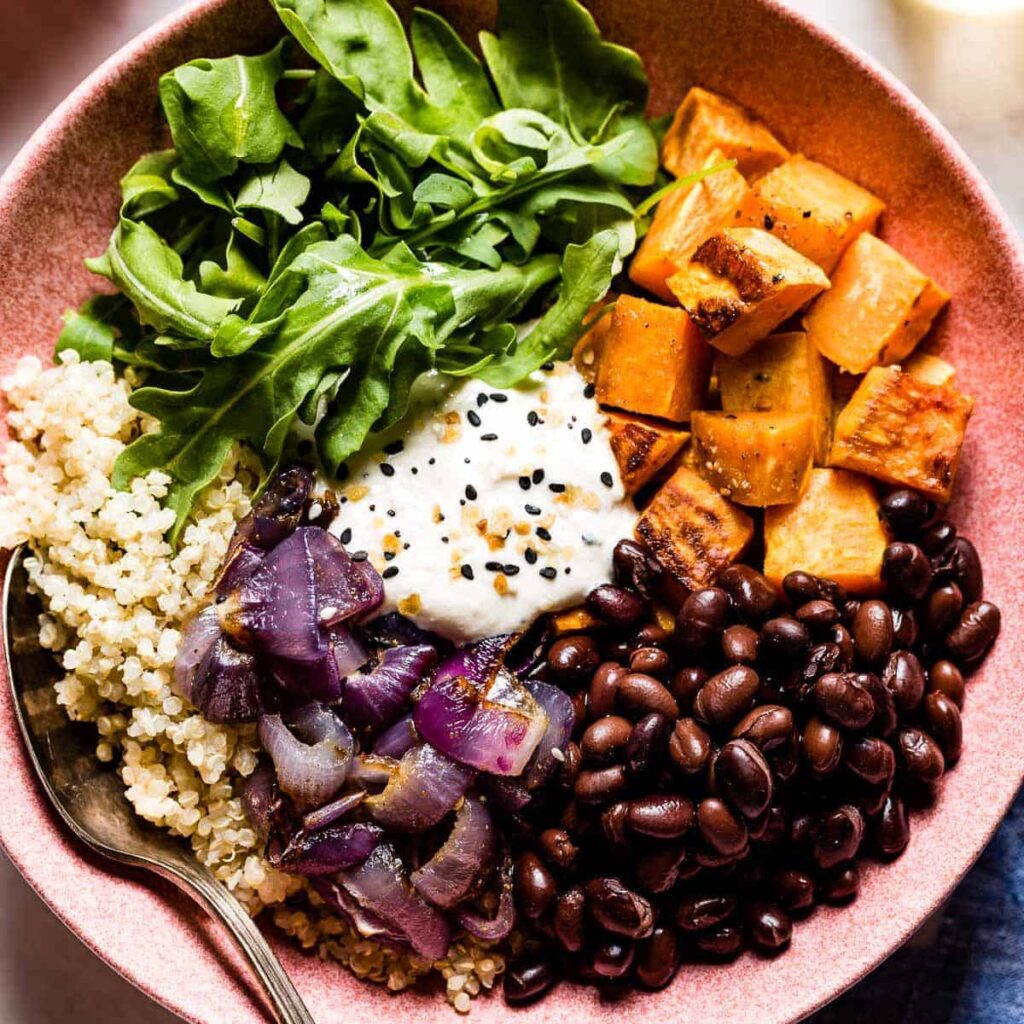
Each ingredient in the Fertility-Boosting Quinoa Bowl offers specific benefits for enhanced fertility:
1. Quinoa:
Quinoa is a nutrient-rich grain that provides protein, fiber, and essential minerals like iron and magnesium [1]. These nutrients contribute to hormonal balance and overall reproductive health.
2. Sweet Potatoes:
Sweet potatoes are rich in beta-carotene, which the body converts into vitamin A. Vitamin A plays a crucial role in reproductive health and fetal development [2]. Sweet potatoes also offer vitamin C, which supports ovulation [3].
3. Broccoli Florets:
Broccoli contains folate, a B-vitamin that supports healthy ovulation and fertility [4]. It is also rich in other fertility-supporting nutrients like vitamin C and calcium.
4. Chickpeas:
Chickpeas are a great source of plant-based protein, fiber, and folate [5]. Folate is crucial for healthy ovulation and fetal development.
5. Pumpkin Seeds:
Pumpkin seeds provide zinc, an essential mineral for reproductive health [6]. They also contain omega-3 fatty acids, which support hormone balance and fertility.
6. Avocado:
Avocado offers healthy monounsaturated fats and vitamin E, which play a role in hormone regulation and reproductive function [7].
7. Extra-Virgin Olive Oil:
Extra-virgin olive oil is rich in monounsaturated fats, which may improve fertility outcomes [8]. It also provides anti-inflammatory properties and aids nutrient absorption.
8. Lemon Juice:
Lemon juice provides a burst of vitamin C, which supports immune function and enhances nutrient absorption [9].
Incorporating the Fertility-Boosting Quinoa Bowl into Your Routine

The Fertility-Boosting Quinoa Bowl can be enjoyed as a wholesome meal for lunch or dinner. It’s a versatile recipe that allows for customization with additional fertility-friendly ingredients like leafy greens, seeds, or a drizzle of fertility-boosting dressing. Make it a regular part of your fertility-enhancing diet to nourish your body with the essential nutrients it needs for conception.
Conclusion
The Fertility-Boosting Quinoa Bowl is a nutritious and fertility-supporting meal designed to provide your body with the essential nutrients it needs for conception. With its combination of fertility-friendly ingredients, this bowl offers a flavorful and satisfying way to fuel your fertility journey. Incorporate this wholesome bowl into your routine and let it nourish your reproductive health on your path to conception.
References:
[1] Office of Dietary Supplements – Magnesium. (2021). National Institutes of Health. Retrieved from https://ods.od.nih.gov/factsheets/Magnesium-Consumer/
[2] Office of Dietary Supplements – Vitamin A. (2021). National Institutes of Health. Retrieved from https://ods.od.nih.gov/factsheets/VitaminA-Consumer/
[3] Office of Dietary Supplements – Vitamin C. (2021). National Institutes of Health. Retrieved from https://ods.od.nih.gov/factsheets/VitaminC-Consumer/
[4] Office of Dietary Supplements – Folate. (2020). National Institutes of Health. Retrieved from https://ods.od.nih.gov/factsheets/Folate-Consumer/
[5] Office of Dietary Supplements – Folate. (2020). National Institutes of Health. Retrieved from https://ods.od.nih.gov/factsheets/Folate-Consumer/
[6] Office of Dietary Supplements – Zinc. (2020). National Institutes of Health. Retrieved from https://ods.od.nih.gov/factsheets/Zinc-Consumer/
[7] Meldrum, D. R. (2000). Role of estrogen in the pathogenesis and prevention of osteoporosis. American Journal of Obstetrics and Gynecology, 163(5 Pt 2), 1861-1863.
[8] Vujkovic, M., et al. (2010). The preconception Mediterranean dietary pattern in couples undergoing in vitro fertilization/intracytoplasmic sperm injection treatment increases the chance of pregnancy. Fertility and Sterility, 94(6), 2096-2101.e2.
[9] Office of Dietary Supplements – Vitamin C. (2021). National Institutes of Health. Retrieved from https://ods.od.nih.gov/factsheets/VitaminC-Consumer/
